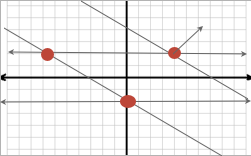Both portfolios and multimodal composition assignments may fall flat on
their faces in the writing classroom. Teachers must recognize that
these learning and assessing tools may not work effectively for every
class, or even every student or teacher.
Both are capable of enhancing learning opportunities, but when used
without adequate critical development or attention to the context and
purpose of the course, coursework, and assessment practices, they both
have the potential to detract from and affectively poison the learning
experience and environment.
|
Context: Benefits couched in drawbacks
Another problem for incorporating portfolio assessment or multimodal
assignments into a college writing course lies in the contextual nature
of both tools. In order for portfolios to work for a given course, they
must be contextualized—they must be developed in regards to the needs
of the course and the stakeholders associated with the course, and
students must understand why they are being asked to create them
(Yancey, 1992; Perry, 1997; Murphy, 1999; Murphy & Smith, 1999). As
Murphy and Smith (1999) insist, “Portfolios are not an appendix,
something tacked onto the tail end of classroom curriculum” (p. 328).
The same is true of multimodal assignments—they need to be incorporated
into classrooms gradually, with purpose and careful scaffolding (Selfe,
2007; Selber, 2004).
Often, instructors become frustrated with students' questions
(questions like, "Why am I always using the computer when I'm supposed
to be learning how to write an essay?") because the instructors take
the answers for granted. Instructors might think the answers are
obvious, but today's students are not the same students who were in the
classroom in years passed. They may be more technologically advanced,
but they have also been exposed to years of testing that forces them to
think of writing as a painful, tedious task constrained by five meager
paragraphs and a formulaic thesis. While this formula of essay writing
is certainly useful for particular contexts, it is not the summation of
all writing; it doesn't even account for all writing produced within
the confines of academia.
Callahan (1995) suggests that portfolio pedagogy should be a “response
to [teachers’] perceptions of classroom needs,” as should opportunities
to engage in multimodal composition (p. 120). While both need to be
strategically crafted into the course curriculum, this is impossible
when teachers must construct courses without any knowledge of their
students. Very rarely do teachers know their students well enough to
design a course tailored to their particular needs before the semester
begins. With a course designed in conjunction with students,
instructors can use both portfolios and multimodal assignments with
positive results because students have a stake in them. However,
administrators often need to have course syllabi and other pertinent
records before the first week of the semester is out.
How then, are instructors to design contextual course curricula? The
problem is an odd one, often skirted by instructors as their courses
are tweaked to students’ needs as the semester progresses; though,
this, can also be problematic. For most instructors and students, the syllabus is used as a binding
contract between instructor and student should disputes arise,
especially in regards to grading or assignment requirements. The
paperwork necessary to begin a course often precludes tailoring
coursework and assessment particular to students’ needs in the
classroom context.
If courses are destined to be created prior to knowing which students
are enrolled, their predispositions for learning styles, and their
personal writing abilities and interests, many students may feel that
multimodality, digital composition, and portfolios are all additives;
they become more hoops for students to jump through just to pass this
writing course. From an instructor's standpoint, the course
design--from in-class activities to digitized multimodal projects to
portfolio assessment--needs to be explained to students from day one.
The explanation needs to be rearticulated as the semester progresses,
helping students make connections between their coursework, their
developing writing styles, and the ways they are being assessed on a
near-daily basis.
|


